Bird Mask Item Number: E2661-0 from the National Museum of Natural History
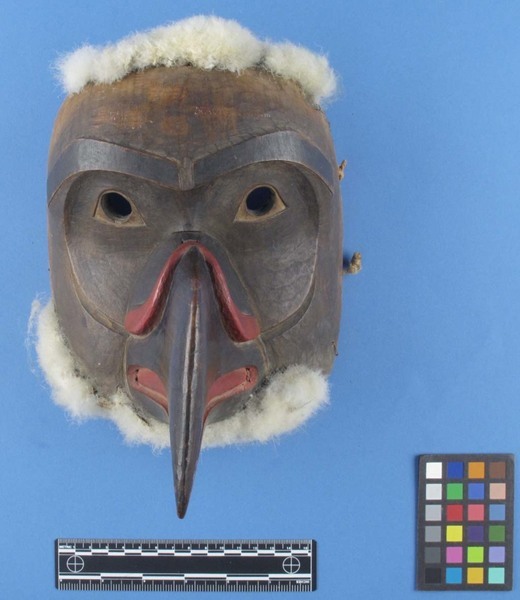

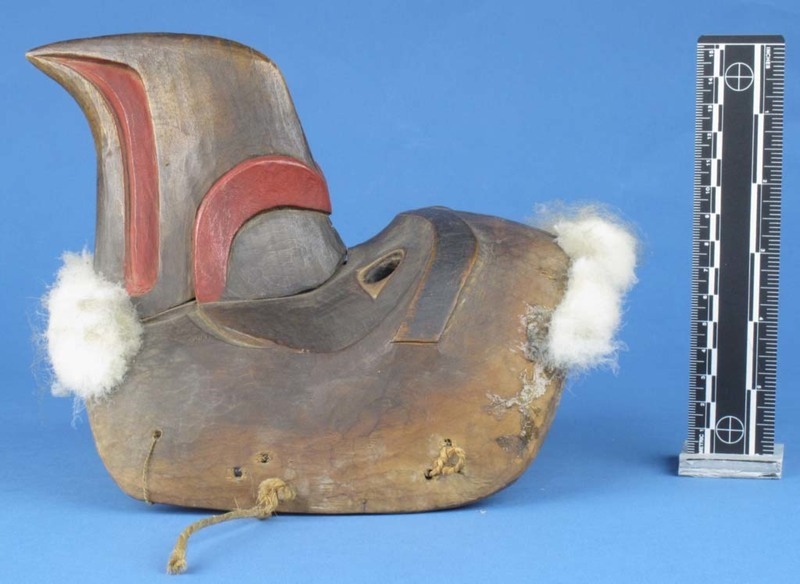
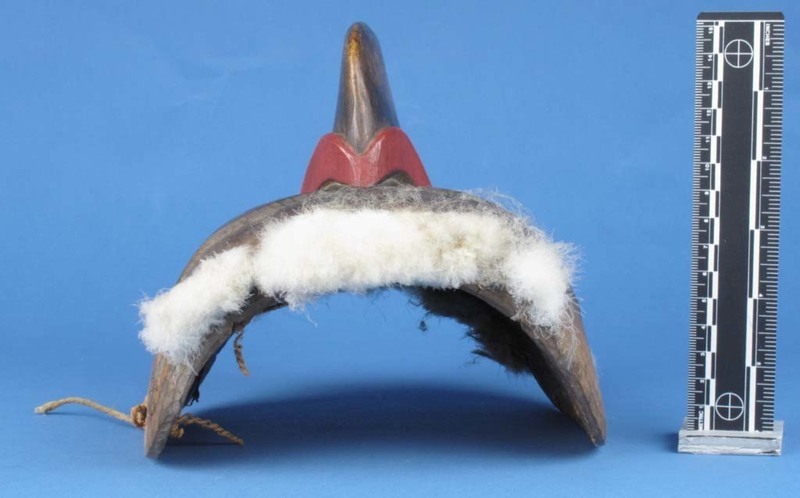
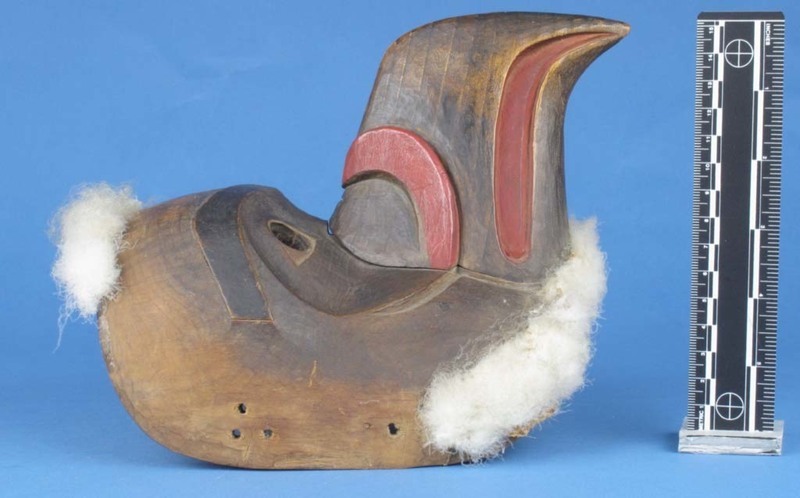
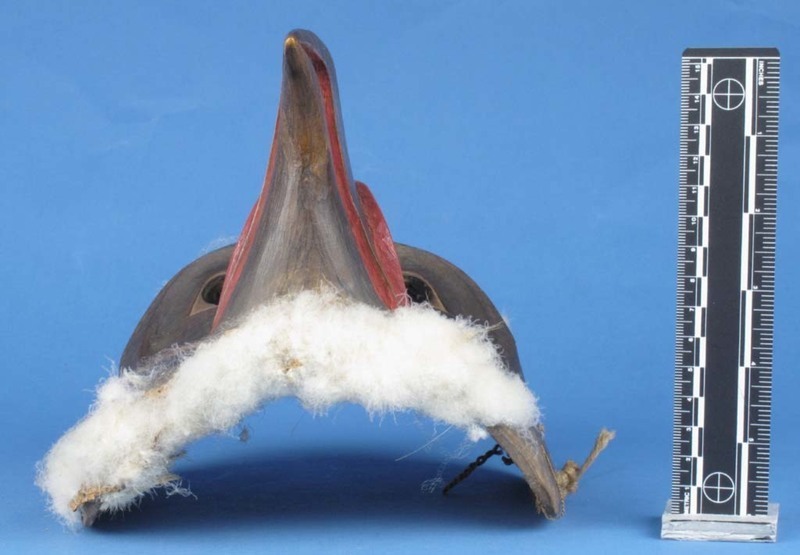
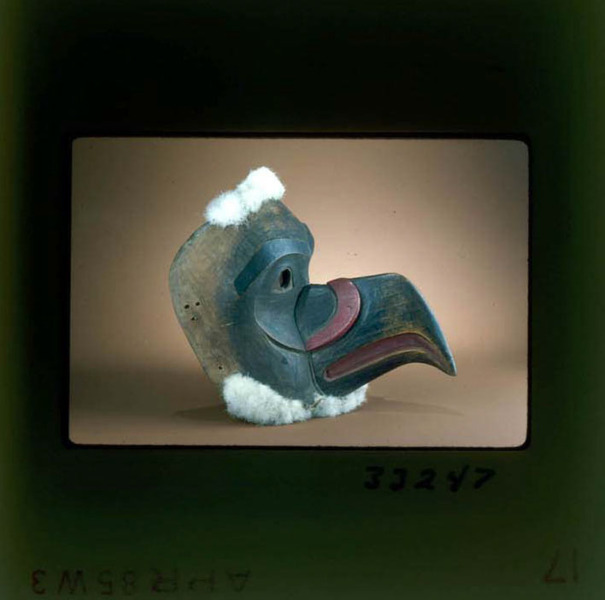
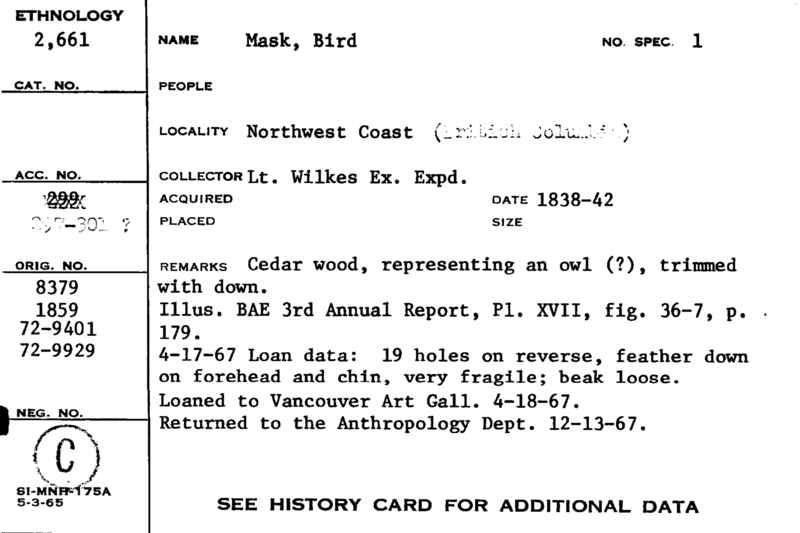


Notes
CEDAR MASK CARVED IN SHAPE OF A BIRD, WITH DOWN ATTACHED TO BEAK AND TOP OF FACE. BEAK IS A SEPARATELY CARVED PIECE AND PAINTED RED AT THE OPENING & AT THE TOP. PUBLICATION: BAE 3RD ANNUAL REPORT, PP. 119 - 120 & PL. XVII, FIG. 36 & 37, P. 179. "MAGNIFICENT VOYAGERS," BY VIOLA & MARGOLIS, ILLUSTRATED P. 141. THIS MASK WAS EXHIBITED AT VANCOUVER ART GALLERY, CANADA, IN 1967. EXHIBITED MAGNIFICENT VOYAGERS, NATIONAL MUSEUM OF NATURAL HISTORY, 1985-86.FROM CARD: "CEDAR WOOD, REPRESENTING AN OWL (?), TRIMMED WITH DOWN. ILLUS. BAE 3RD ANNUAL REPORT, PL. XVII, FIG. 36-7, P. 179. 4-17-67 LOAN DATA: 19 HOLES ON REVERSE, FEATHER DOWN ON FOREHEAD AND CHIN, VERY FRAGILE; BEAK LOOSE. LOANED TO VANCOUVER ART GALL. 4-18-67. RETURNED TO THE ANTHROPOLOGY DEPT. 12-13-67." Caption and description in BAE 3rd Annual Report, p. 179 and 119, identify this mask as representing eagle or thunderbird.Provenience note, in 1841 Oregon Territory encompassed the land from Russian Alaska to Spanish California and from the Pacific to the Continental Divide. The U.S. Exploring Expedition did not go to Canada, but did reach Oregon Territory in 1841, and carried out a hydrographic survey of the Columbia River from its mouth to the Cascades, as well as doing some surveying inland.They had dealings with Hudson's Bay Company staff during that time, and it is probable that the HBC is the source of a number of the Northwest Coast artifacts collected by the expedition.
Item History
- Made
- Collected during 1841
- Received from United States Exploring Expedition during 1858
What
- Name
- Bird Mask
- Identification Number
- E2661-0
- Type of Item
- mask
Who
- Received from
- United States Exploring Expedition
Where
- Holding Institution
- National Museum of Natural History
- Made in
- “United States (not certain) / Canada (not certain): British Columbia (not certain)” ?
- Collected in
- “United States (not certain) / Canada (not certain): British Columbia (not certain)” ?
When
- Collection Date
- during 1841
- Acquisition Date
- during 1858
Other
- Accession Number
- 66A00050